-
 bitcoin
bitcoin $118548.520763 USD
3.67% -
 ethereum
ethereum $4352.564943 USD
4.79% -
 xrp
xrp $2.964058 USD
4.22% -
 tether
tether $1.000565 USD
0.05% -
 bnb
bnb $1028.372955 USD
1.46% -
 solana
solana $221.373507 USD
6.00% -
 usd-coin
usd-coin $0.999933 USD
0.02% -
 dogecoin
dogecoin $0.248633 USD
6.85% -
 tron
tron $0.341444 USD
2.38% -
 cardano
cardano $0.852946 USD
5.82% -
 hyperliquid
hyperliquid $47.869306 USD
6.15% -
 chainlink
chainlink $22.561476 USD
6.01% -
 ethena-usde
ethena-usde $1.001258 USD
0.05% -
 avalanche
avalanche $30.660000 USD
2.06% -
 stellar
stellar $0.400917 USD
9.76%
Understanding ETH ETFs: A Simple Explainer
An ETH ETF lets investors gain exposure to Ethereum’s price without owning the crypto directly, offering regulated, stock-like access through traditional brokers.
Aug 09, 2025 at 04:57 am

What Are ETH ETFs and How Do They Work?
ETH ETFs, or Ethereum Exchange-Traded Funds, are investment vehicles that allow investors to gain exposure to the price movements of Ethereum (ETH) without directly owning the cryptocurrency. These funds are traded on traditional stock exchanges, making them accessible to a broader range of investors, including those who may be hesitant to navigate cryptocurrency exchanges or manage private keys.
An ETH ETF holds Ethereum or derivatives linked to its price and issues shares that represent a proportional interest in that holding. When you buy shares of an ETH ETF, you're not purchasing ETH directly. Instead, you're buying a financial product whose value is tied to the performance of Ethereum. This structure provides a layer of regulatory oversight and custodial security, as the underlying assets are typically held by licensed custodians.
The pricing of an ETH ETF is influenced by the net asset value (NAV) of its holdings, which is calculated based on the current market price of ETH. However, due to market demand, the trading price of the ETF shares may trade at a premium or discount to the NAV. Authorized participants can create or redeem shares through an in-kind exchange mechanism, helping to keep the market price aligned with the fund’s intrinsic value.
Regulatory approval is a key component in the launch of any ETH ETF. In the United States, for example, the Securities and Exchange Commission (SEC) must approve the fund’s prospectus, ensuring compliance with securities laws. This process involves rigorous scrutiny of the fund’s structure, custody solutions, and potential market manipulation risks.
Differences Between ETH ETFs and Direct ETH Ownership
Investing in an ETH ETF differs significantly from buying and holding Ethereum directly on a digital wallet. One of the most notable distinctions is custody. When you own ETH directly, you control the private keys and are responsible for securing your assets. In contrast, with an ETH ETF, the Ethereum is held by a third-party custodian, eliminating the need for individual key management.
Another key difference lies in accessibility and integration. ETH ETFs are available through traditional brokerage accounts, enabling investors to include Ethereum exposure in retirement accounts like IRAs or 401(k)s—something generally not possible with direct crypto holdings. This integration simplifies tax reporting and aligns with existing investment workflows.
From a regulatory standpoint, ETH ETFs operate under established financial frameworks, offering a level of investor protection that direct crypto ownership does not. For instance, ETFs are subject to regular audits, disclosure requirements, and anti-fraud provisions. Direct ETH transactions, on the other hand, are irreversible and lack centralized oversight.
Additionally, liquidity and trading mechanics vary. ETH ETFs can be bought and sold during regular market hours, just like stocks. Direct ETH trading occurs 24/7 on cryptocurrency exchanges, offering more flexibility in timing but also exposing investors to higher volatility and potential security risks.
How to Invest in an ETH ETF: Step-by-Step Guide
Purchasing shares in an ETH ETF is a straightforward process for those familiar with stock trading. The following steps outline how to get started:
- Open a brokerage account with a platform that offers access to ETFs. Ensure the platform supports the specific ETH ETF you’re interested in.
- Fund your account using bank transfers, ACH, or other supported deposit methods.
- Search for the ETH ETF using its ticker symbol (e.g., $DEF for a hypothetical fund).
- Review the fund’s expense ratio, historical performance, and holdings before proceeding.
- Place a buy order—choose between market order (executed immediately at current price) or limit order (executed only at a specified price).
- Monitor your investment through your brokerage dashboard, where you can track price changes and fund updates.
It’s important to verify that the ETF is SEC-approved and actively trading. Some proposed ETH ETFs may be in the filing stage and not yet available for purchase. Always check the latest status with your broker or the SEC’s EDGAR database.
Types of ETH ETF Structures
ETH ETFs can be structured in different ways, each with unique implications for investors. The two primary models are physically backed ETFs and futures-based ETFs.
- A physically backed ETH ETF holds actual Ethereum tokens in secure custody. The fund’s shares directly reflect ownership of these assets. This structure provides a one-to-one correlation with ETH’s price, minus fees.
- A futures-based ETH ETF invests in Ethereum futures contracts rather than holding the underlying asset. These contracts are agreements to buy or sell ETH at a predetermined price on a future date. While this model avoids direct custody challenges, it introduces contango and backwardation risks, which can affect long-term returns.
Some funds may also use synthetic exposure through swaps or other derivatives, though this is less common due to counterparty risk. Each structure has trade-offs in terms of tracking accuracy, regulatory acceptance, and tax treatment.
Potential Risks and Considerations
While ETH ETFs offer a convenient way to gain exposure to Ethereum, they are not without risks. One major concern is tracking error, where the ETF’s performance diverges from the actual price of ETH due to fees, rebalancing delays, or derivative inefficiencies.
Another risk involves regulatory uncertainty. Although an ETF may be approved, changes in crypto policy or enforcement actions could impact its operation. For example, if the SEC were to challenge the classification of ETH as a commodity, it could affect the fund’s legal standing.
Custodial risk remains relevant even in ETFs. If the custodian suffers a breach or mismanagement, the fund’s assets could be compromised. While reputable custodians employ cold storage and insurance, no system is entirely immune to failure.
Additionally, expense ratios reduce returns over time. An ETF charging 0.75% annually means investors pay $7.50 per $1,000 invested each year. Over decades, this can significantly erode gains compared to holding ETH directly with no ongoing fees.
Frequently Asked Questions
Can I convert my ETH ETF shares back into actual Ethereum?No, ETH ETF shares cannot be converted into physical Ethereum. These shares represent a financial interest in the fund, not direct ownership of the cryptocurrency. To own ETH, you must purchase it separately through a crypto exchange and transfer it to a personal wallet.
Are ETH ETFs taxable like regular stocks?Yes, ETH ETFs are subject to standard securities taxation. Short-term gains (held under one year) are taxed as ordinary income, while long-term gains (held over one year) qualify for lower capital gains rates. Dividends or distributions, if any, are also taxable.
Do ETH ETFs pay dividends?ETH ETFs do not pay dividends because Ethereum itself does not generate dividend-like income. Any returns come solely from price appreciation of the underlying asset. Some funds may distribute gains from futures trading, but these are not recurring dividends.
How do I check if an ETH ETF is SEC-approved?Visit the SEC’s official website and use the EDGAR database to search for the fund by name or ticker. Approved ETFs will have a publicly available prospectus and a clear approval order. Unapproved filings will be listed as 'filed' but not 'effective.'
Disclaimer:info@kdj.com
The information provided is not trading advice. kdj.com does not assume any responsibility for any investments made based on the information provided in this article. Cryptocurrencies are highly volatile and it is highly recommended that you invest with caution after thorough research!
If you believe that the content used on this website infringes your copyright, please contact us immediately (info@kdj.com) and we will delete it promptly.
- BlockDAG, DOGE, HYPE Sponsorship: Crypto Trends Shaping 2025
- 2025-10-01 00:25:13
- Deutsche Börse and Circle: A StableCoin Adoption Powerhouse in Europe
- 2025-10-01 00:25:13
- BlockDAG's Presale Buzz: Is It the Crypto to Watch in October 2025?
- 2025-10-01 00:30:13
- Bitcoin, Crypto, and IQ: When Genius Meets Digital Gold?
- 2025-10-01 00:30:13
- Stablecoins, American Innovation, and Wallet Tokens: The Next Frontier
- 2025-10-01 00:35:12
- NBU, Coins, and Crypto in Ukraine: A New Yorker's Take
- 2025-10-01 00:45:14
Related knowledge
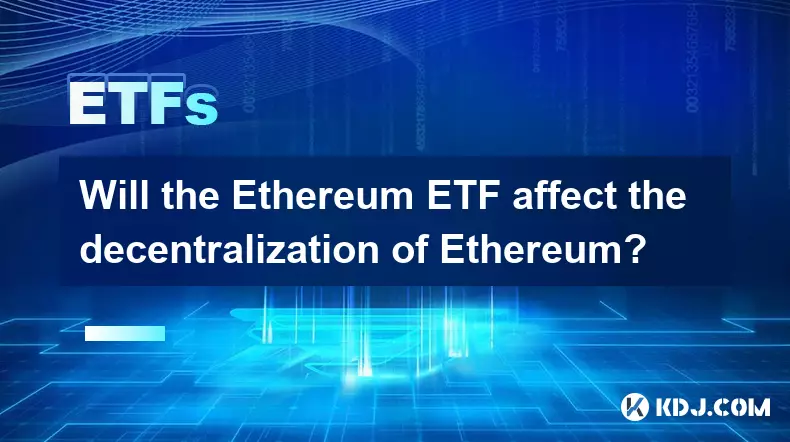
Will the Ethereum ETF affect the decentralization of Ethereum?
Sep 28,2025 at 04:37am
Understanding Ethereum ETFs and Their Structure1. An Ethereum ETF (Exchange-Traded Fund) is a financial product that tracks the price of Ethereum with...
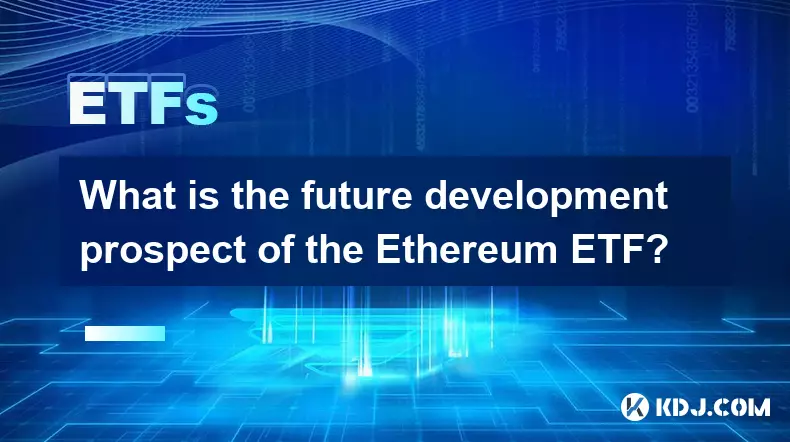
What is the future development prospect of the Ethereum ETF?
Sep 23,2025 at 01:36am
Ethereum ETF and Market Dynamics1. The introduction of an Ethereum ETF has sparked significant interest across the digital asset space. Institutional ...

Is the Ethereum ETF affected by Ethereum gas fees?
Sep 25,2025 at 12:18am
Ethereum ETFs and Their Structural Independence from Gas Fees1. Ethereum Exchange-Traded Funds (ETFs) are financial instruments designed to track the ...
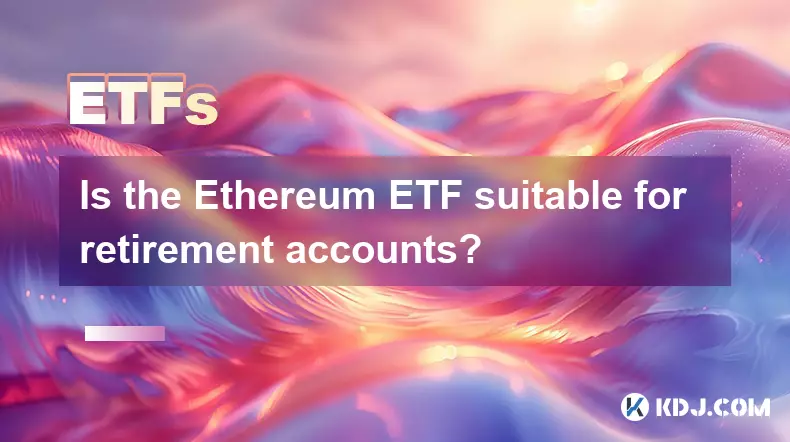
Is the Ethereum ETF suitable for retirement accounts?
Sep 29,2025 at 06:36am
Ethereum ETFs and Their Role in Retirement Planning1. Ethereum Exchange-Traded Funds (ETFs) have emerged as a bridge between traditional finance and d...
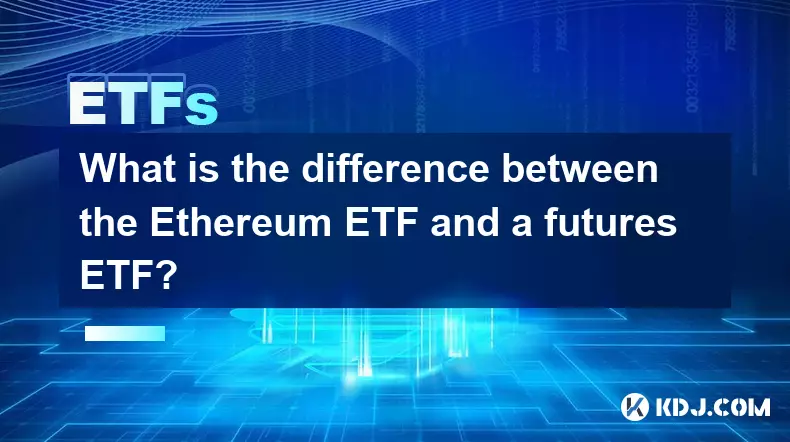
What is the difference between the Ethereum ETF and a futures ETF?
Sep 23,2025 at 06:18am
Bitcoin's Role in Decentralized Finance Evolution1. Bitcoin remains the cornerstone of decentralized finance, serving as a benchmark for value transfe...
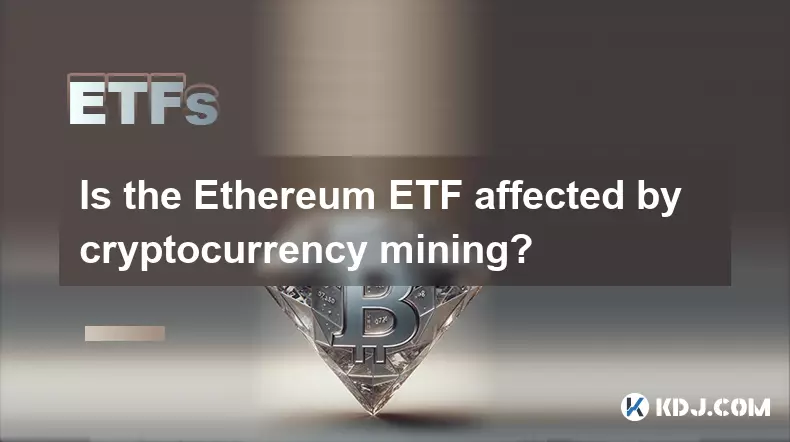
Is the Ethereum ETF affected by cryptocurrency mining?
Sep 23,2025 at 03:37pm
Understanding Ethereum ETFs and Their Market Drivers1. An Ethereum ETF (Exchange-Traded Fund) is a financial product that tracks the price of Ethereum...

Will the Ethereum ETF affect the decentralization of Ethereum?
Sep 28,2025 at 04:37am
Understanding Ethereum ETFs and Their Structure1. An Ethereum ETF (Exchange-Traded Fund) is a financial product that tracks the price of Ethereum with...

What is the future development prospect of the Ethereum ETF?
Sep 23,2025 at 01:36am
Ethereum ETF and Market Dynamics1. The introduction of an Ethereum ETF has sparked significant interest across the digital asset space. Institutional ...

Is the Ethereum ETF affected by Ethereum gas fees?
Sep 25,2025 at 12:18am
Ethereum ETFs and Their Structural Independence from Gas Fees1. Ethereum Exchange-Traded Funds (ETFs) are financial instruments designed to track the ...

Is the Ethereum ETF suitable for retirement accounts?
Sep 29,2025 at 06:36am
Ethereum ETFs and Their Role in Retirement Planning1. Ethereum Exchange-Traded Funds (ETFs) have emerged as a bridge between traditional finance and d...

What is the difference between the Ethereum ETF and a futures ETF?
Sep 23,2025 at 06:18am
Bitcoin's Role in Decentralized Finance Evolution1. Bitcoin remains the cornerstone of decentralized finance, serving as a benchmark for value transfe...

Is the Ethereum ETF affected by cryptocurrency mining?
Sep 23,2025 at 03:37pm
Understanding Ethereum ETFs and Their Market Drivers1. An Ethereum ETF (Exchange-Traded Fund) is a financial product that tracks the price of Ethereum...
See all articles










































































